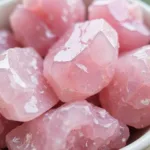Pearls, those lustrous orbs from the ocean, are often associated with purity and elegance, usually envisioned in a pristine white hue. But did you know that pearls can actually occur in a breathtaking array of colors? From soft pastels to vibrant jewel tones, the world of pearl colors is as diverse as the seas they come from.
What Makes Pearls Different Colors?
The captivating colors of pearls are determined by a fascinating interplay of factors, primarily the type of mollusk and the environment in which they grow. Let’s delve into the science behind these iridescent wonders:
- Type of Mollusk: Different species of oysters and mussels produce pearls with unique color characteristics. For instance, South Sea pearls, coveted for their impressive size, often exhibit silver or golden hues, while Akoya pearls are renowned for their classic white and delicate pastel shades.
- Nacre Composition: Nacre, also known as mother-of-pearl, is the iridescent material that forms the pearl’s outer layers. The specific composition of nacre, including the presence of trace elements and organic compounds, significantly influences the pearl’s color.
- Environmental Factors: The waters where a pearl grows play a crucial role in its final hue. Water temperature, salinity, and the availability of specific minerals and nutrients can all influence the nacre’s composition and, consequently, the pearl’s color.
Exploring the Natural Color Palette of Pearls
Pearls naturally occur in an enchanting spectrum of colors, each with its unique charm and allure. Let’s explore some of the most sought-after hues:
- White: The epitome of classic elegance, white pearls are prized for their timeless beauty and versatility.
- Cream: With a subtle touch of warmth, cream pearls exude a gentle and sophisticated aura.
- Pink: Often associated with romance and femininity, pink pearls range from delicate blush tones to vibrant coral hues.
- Black: The epitome of sophistication, black pearls, particularly those from Tahiti, captivate with their exotic allure and mirror-like luster.
- Golden: Radiating warmth and opulence, golden pearls, primarily found in the South Seas, are highly prized for their rarity and luxurious appeal.
- Blue: Evoking the depths of the ocean, blue pearls, particularly those with iridescent overtones, possess a captivating and ethereal beauty.
The Allure of Colored Pearls: Beyond the Ordinary
Colored pearls offer a captivating alternative to traditional white pearls, allowing individuals to express their unique style and personality. Whether adorning a simple strand or adding a pop of color to a statement piece, these gems from the sea possess an undeniable allure.
“Pearls are like snowflakes – each one is unique, carrying its own story within its iridescent layers,” says renowned jewelry designer, Anya Dubois. “Colored pearls, in particular, offer an opportunity to embrace individuality and make a bold statement.”
Caring for Your Colorful Treasures
To preserve the beauty of your colored pearls, follow these simple care tips:
- Gentle Cleaning: After each wear, wipe your pearls with a soft, lint-free cloth to remove any residue or oils.
- Avoid Harsh Chemicals: Keep your pearls away from perfumes, cosmetics, and household cleaners, as these substances can damage the nacre.
- Proper Storage: Store your pearls separately from other jewelry to prevent scratching. A soft pouch or a lined jewelry box is ideal.
By following these guidelines, you can ensure that your colored pearls retain their luster and beauty for years to come.
Conclusion
From the classic elegance of white to the captivating allure of black and the vibrant hues of pink and blue, the world of pearl colors is as diverse and fascinating as the underwater world from which they originate. Whether you’re drawn to the timeless beauty of a single strand or the bold statement of a colorful pearl ring, these iridescent gems offer a timeless elegance that transcends trends and generations.
